Main Menu
Two Wheels Through the Heartland

Growing up in a family of cyclists and mountaineers, adventure is embedded in Heather’s DNA. She climbed her first mountain at age six, and rode her first century ride at fourteen. She is now circling the globe to climb the famed 7 Summits and is a long-distance adventure cyclist for Jamis Bikes. Her mission is to usher more women and girls into endurance sports; from teaching Brownie Scouts how to pack for a hike, to leading women on their first mountaineering expeditions and bikepacking journeys. Catch her on the Discovery Channel’s latest season of Naked And Afraid.
Share This Article!
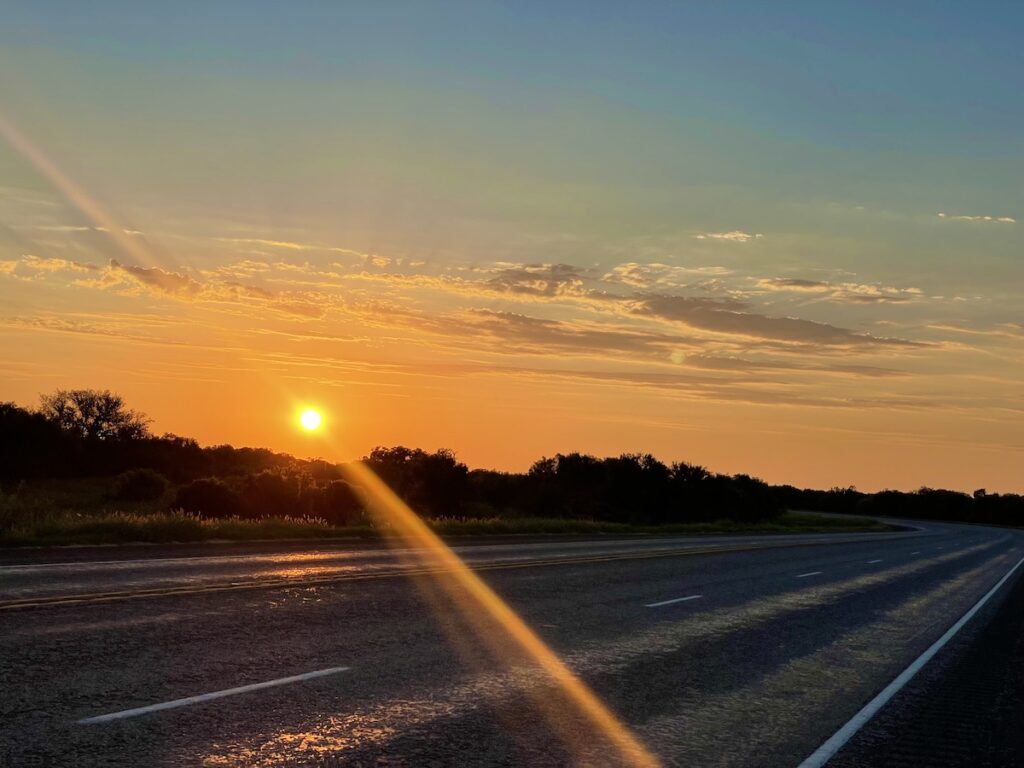

By: Heather Werner
It’s human nature to explore. To follow our curiosity as it leads us down unfamiliar paths and into hidden nooks. And I’d followed mine straight to Grand Forks, North Dakota, the starting point on my journey from Canada to Mexico. The American heartland was my final frontier, the last uncharted region of my home country. Determined to fully embrace this new world, I had decided to ditch the traditional road trip in favor of the more scenic route: traveling the entire two-thousand mile distance by bicycle.
Look for the kidnapper van out front. That’s me.
The text blinked up from my phone. A message from Dave, a man I’d never met, who had agreed to drive me eighty miles from the Grand Forks airport to the Canadian border. My life on the road—and at the mercy of total strangers—had begun.
I lugged my cardboard bicycle box to the curb, where, sure enough, a van large enough to hold several captives was parked. Dave, a local bike mechanic, opened the doors to reveal a traveling bike shop inside. Together, we assembled my ride; a brand new Jamis Renegade S4.
To save on weight, I’d whittled my life down to thirty-five pounds of bare essentials. Camping gear filled most of my pannier space, as I’d chosen to rough it on the road rather than splurge on motels. I allowed myself one change of bike clothes and only the bare minimum in toiletries. One area where I refused to skimp was electronics. I’d packed a solar charger to power all the digital gizmos that enable modern life; bike lights, an iPhone, a GoPro, a laptop so I could work from the road, and headphones so I could zone out with some tunes after a long day. Whatever space remained was crammed with high-calorie snacks.
Once fully assembled, we loaded it into the back of the van and drove for the border. Though my nerves were as taut as piano wire, I couldn’t help but stare in awe at our surroundings. Golden-capped cornfields stretched in every direction. The sky was endless, a Renaissance-era fresco of cotton candy clouds and brilliant sunbeams.
“Think it’ll rain on us?” I asked, pointing to black clouds in the distance. Since I’d chosen to ride in August, thunderstorms and tornadoes were a persistent worry.
Dave laughed. “That storm’s a hundred miles away. The distance plays tricks on everyone’s eyes when they first get here.”
He dropped me at the border, and I crossed into Canada just moments before sunset, asking the border patrol officer where I could find the nearest Canadian flag. The officer pointed me toward the enormous Welcome To Manitoba display, and I snapped my starting photo; a bright grin that looked more optimistic than I felt, a cardboard Mexico Or Bust sign held confidently above my head.
Mile Zero, two-thousand miles to go.
The task ahead was daunting; a solo, unsupported ride through the American heartland. The journey was so massive, to think about the entirety of it was debilitating. I had to focus on one day at a time, one pedal rotation at a time. And all that mattered today was finding a safe place to sleep. I took a deep breath to steel my nerves, then pedaled back into the United States just as the sun dipped below the horizon. A clump of trees and cattails beside the road would serve as a makeshift campsite, just thick enough to hide myself from passing truckers. I unzipped my panniers and set up my tiny, one-person tent. Within minutes, I was snuggled into my sleeping bag, listening to eighteen-wheelers rumble past, trying to calm my first day jitters and drift asleep.
One day down, one month left to go.
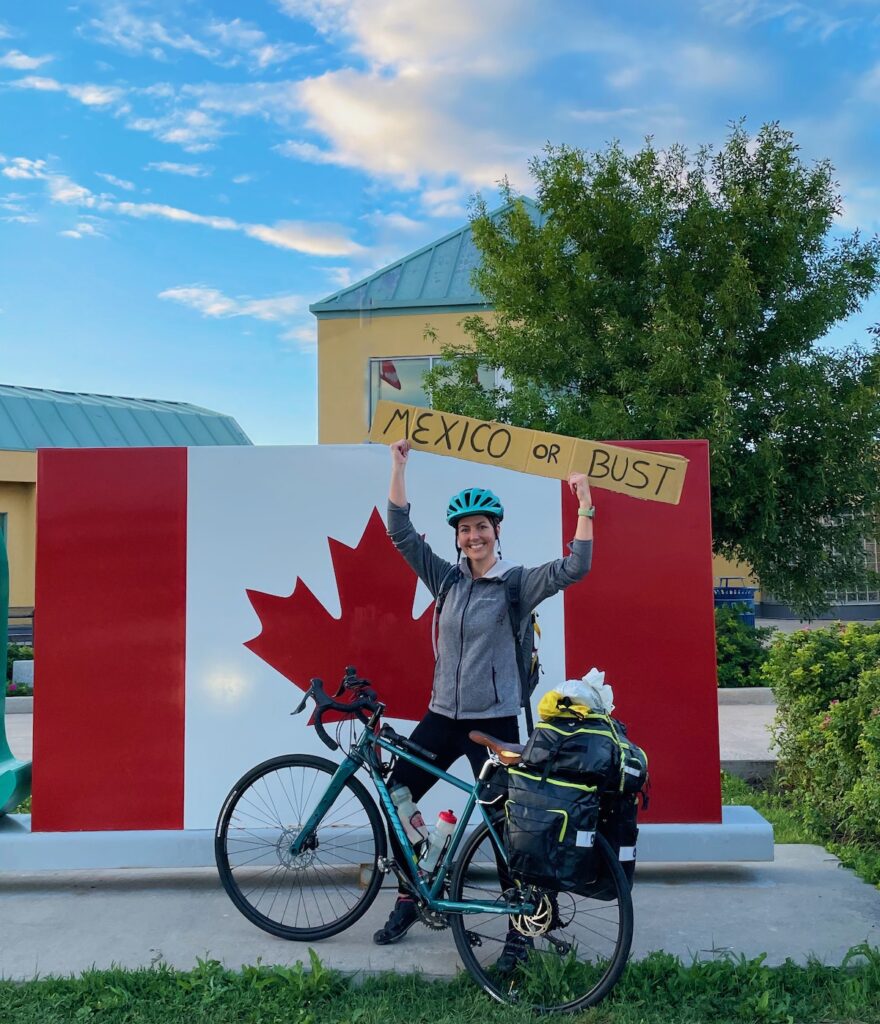
***
Life on the road is a constant logistics challenge; finding the shortest route from A to B, while continually scanning for crucial pitstops. Gas stations are reliable sources of food and water, and a welcome break from relieving oneself in the woods. Churches are relatively safe places to camp, with some pastors even allowing travelers to spend the night inside, a modern-day twist on begging “Sanctuary!” at cathedral doors. I also kept a close eye on the Warm Showers app, which connects traveling cyclists to those willing to open their homes to strangers. As a hairstylist, I’d brought my shears along for the journey, offering haircuts as a trade for safe sleeping quarters.
Even the roads themselves had to be carefully scrutinized. In the Dakotas, riding on the interstates is not only legal, but usually the quickest way to zip between towns. On the rare occasion that boredom would push me onto side roads, I would often regret the decision as paved roads fizzled into dirt and loose gravel, or worse, dead-ended in the middle of farm country. It was also difficult to let go of the unique thrill of hearing an eighteen-wheeler approach at high speed, and a moment later, get sucked into its vortex and whipped down the road. An adrenaline rush that drafting behind other cyclists could never replicate.
The downside to riding the freeways lay in the shoulder: broken glass, discarded nails, and a mishmash of metallic odds and ends just waiting to shred tires to pieces.
I’d managed to navigate both North Dakota and Minnesota without a single flat, but my luck ran out in South Dakota, with two flats within five miles of one another. The wind—a thirty-five mile per hour headwind I’d been fighting for hours—howled as I pulled out my last tube. I made a mental note to stock up in the next town.
I swapped the tube, propped the bike against a sign post, and began to pump it up. I was mid-pump when a sudden gust of wind caught the bike and sent it flying, snapping the tube valve in half.
I stared at it in disbelief, wanting to scream at the sky in frustration. My last tube was now stuck in limbo; ridable, but only half-full of air, it would be painfully slow. The nearest bike shop was forty miles away. I had enough water to make it to town on an average day, but with this headwind? Those forty miles could take several hours.
I wheeled the bike to the highway on-ramp. Back home in San Jose, I’d picked up my fair share of stranded cyclists and hikers over the years, and I figured it was time to cash in on a karma payback. I stood beside the ramp and held out my thumb to passing pickup trucks.
Half an hour passed. Drivers smiled and waved, but not a single one pulled onto the shoulder. Resigned to my fate, I straddled the bike, only to hear the whoop of an oncoming siren; a local police car, pulling onto the shoulder behind me. I swore under my breath.
The officer exited his cruiser. “I got a few calls that you were thumbing a ride,” he said. “You want to tell me what you’re doing?”
I pointed at my squishy tire. “Just trying to get into town as quick as I can.”
“And what are you doing on the highway in the first place?”
I fought to keep the snark out of my voice. “It’s legal to ride the highway here.”
He paused, seemingly unaware of that fact, recalculating a response. “Ok…but do you think that’s very safe?”
I bit back a sigh, reminding myself that he could still arrest me for hitchhiking. The constant comments about safety are something that every woman adventurer has endured. Incessant requests for check-ins, questions about whether we have the proper gear, comments from men about how they would never let their wives do that sort of thing…it was enough to make me start signing travel-related emails with Heath rather than Heather, just to avoid the extra layer of patronization.
After I promised to stop sticking my thumb out and bothering the good people of South Dakota, the cruiser took off, leaving me in the same sorry position I’d been half an hour ago. I mounted the bike and crawled the next thirty-five miles, cursing the wind, cursing the glass shards in the gutter, and cursing this state’s lack of hospitality.
Five miles to town, a large white van pulled onto the shoulder in front of me. Another kidnapper van, I mused, looking at the opaque windows. The thought of getting dragged inside against my will didn’t elicit much of a reaction. Hell, after the day I’d had, it may have been a relief.
A giant of a man emerged from the driver’s side, his shaggy white hair billowing in the gusts. “I could hear your knees breaking from a mile away!” he called. “Come on in, get out of the wind.”
I lifted my bike into the back, then gratefully climbed into the passenger seat. As I recounted the day’s struggles, the man laughed.
“These drivers will never stop for you,” he said. “They’re friendly enough, but it’s just not part of their culture. Now, back where I’m from, in California…”
I laughed. Of course he was Californian. For all the ribbing we endure for our flaky, pie-in-the-sky ideals, when the chips are down, we do tend to pull through for one another. I thanked my lucky stars that when I’d needed it, I’d crossed paths with a small piece of home.
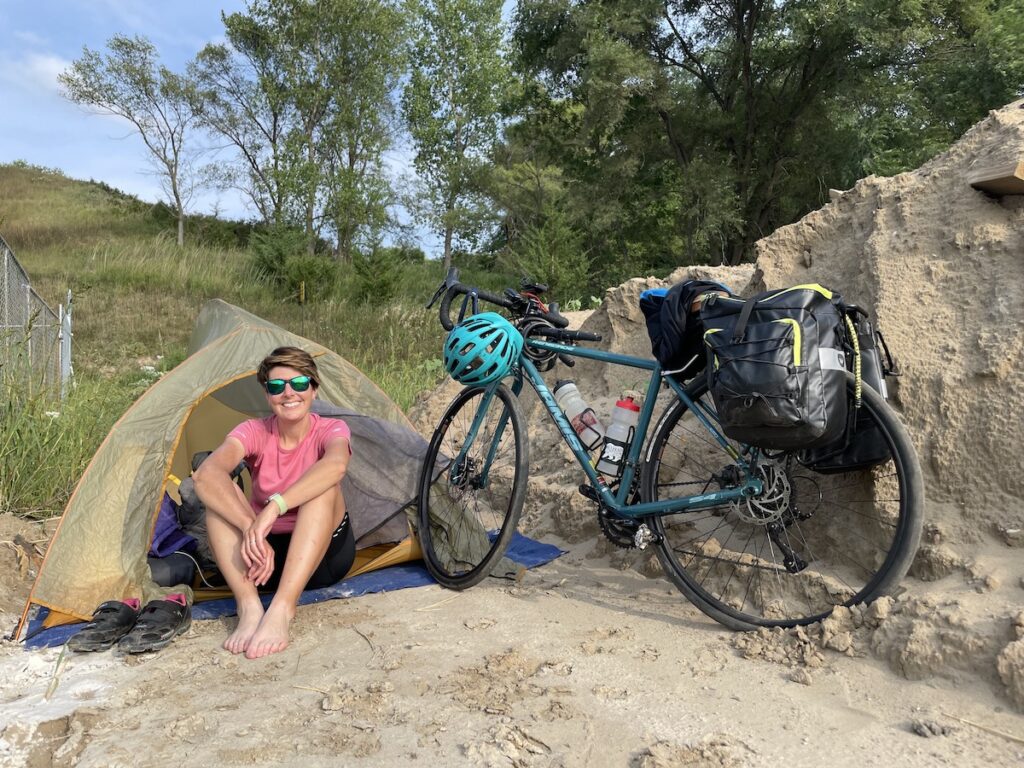
***
One of the joys of long endurance adventures is disconnecting from the “real world.” You exist in a bubble, separate from the news of the day. But as I rode through Iowa, one news story became impossible to ignore: the encroaching heat wave. In the summer of what would likely become the hottest year on record, a massive heat dome was settling over the middle of the United States, with its epicenter directly above my head.
Over the last week, midday temperatures had risen from the eighties to nineties. And now, midway through Iowa, I checked my Apple Watch: 101 degrees. It was just after noon, so the temperature would climb for the next few hours at least. I could pop into a coffee shop for the afternoon, but how much would that end up costing for the duration of the heat dome? A slow bleedout of funds, one cup of joe at a time.
I pulled into the small town of Onawa and rolled up to the post office, a squat building surrounded by lush lawns and majestic oaks. The patches of shade looked heavenly, and I collapsed on the lawn. The grass was comparatively cool, and I lay back, letting it absorb the heat radiating from my skin.
“Honey, are you alright?”
I jerked awake, unaware that I’d even dozed off. A woman’s face hovered directly above mine, creased with worry.
“Do you need water?”
“I’m fine,” I croaked. I tried to shake the delirium from behind my eyes. God, it was hot. My throat was rough and my clothes were soaked through. “Just taking a breather.”
She stared at me, unwilling to be brushed off. “Did you know at a hundred and five degrees, your body can no longer cool itself?” she asked. “It starts to shut down.”
I glanced at my watch. It now read 109.
“I didn’t,” I admitted.
“I’m a friend of the Onawa Library,” she said. “You head over there and get inside, you understand? I’ll give them a call and let them know you’re coming.”
Maybe it was the sharp authority in her voice, maybe the heat had sapped the last of my will to resist, but I wasn’t going to argue the point. I picked up my bike and trudged the way she had pointed, over to a large, brick building.
Inside, the cold air was a much-needed slap to the face, waking me from my stupor. As promised, the librarians were expecting me, and ushered me to a quiet area where I could read, charge my phone, and enjoy complimentary coffee and cookies. I was allowed to stay until they closed at 6 p.m., when the sun was beginning its descent toward the horizon and temperatures dropped to the nineties.
And so began my love affair with public libraries. As the heat dome intensified, I slid into a semi-nocturnal routine; sleeping from midnight until 4 a.m., then riding until noon. As soon as the blazing sun was directly above me, I’d hole up in the nearest library, devouring books, jigsaw puzzles, and free coffee until it was cool enough to resume riding into the evening.
I had discovered the holy trinity of urban survival: gas stations, churches, and libraries. One provided sustenance, one provided sleep, and one provided safety from the elements. It was no-frills, utilitarian living, but each one offered a small comfort that made it possible to keep moving forward.
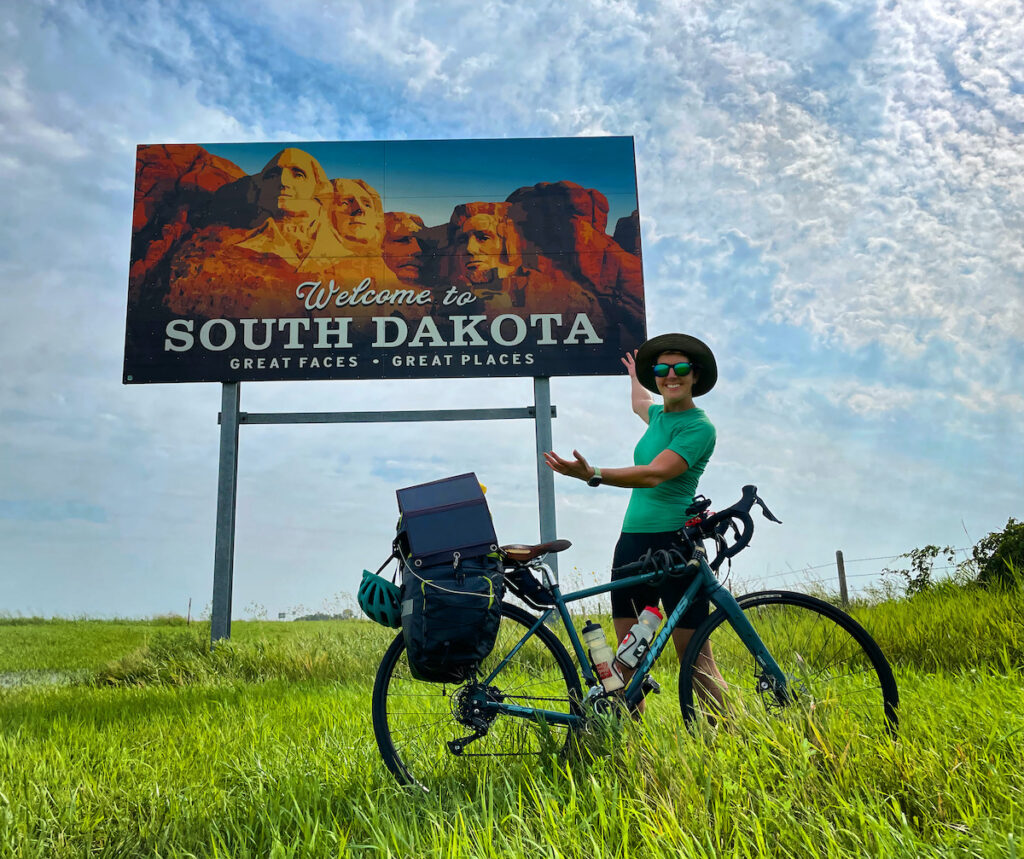
***
Iowa and Nebraska passed in a haze of cornfields. I was invited to dinner by a group of golden-years motorcyclists, and met my first Warm Showers host. I’d settled into a nighttime riding routine, and while the miles didn’t come easily, there was a peaceful monotony to them.
That sense of serenity was shattered as I rolled over the Kansas border. My first blissful impression was that Kansas was going to be a breeze. One side effect of riding for weeks at a time was you begin to develop a taste for specific road coverings. Smooth, fresh, friction-free asphalt can brighten up a cyclist’s day, and Kansas was a vast network of gorgeous, freshly paved roads. As the sun rose, I looked forward to a stress-free morning of riding, only to be jerked back to reality as a pickup truck swerved toward me, the driver laying on the horn.
I swore in surprise, unsure if I was the one at fault. I was riding on only a few hours of sleep, so it was possible I’d zoned out and drifted into their lane. I shook off the shock, forcing myself to concentrate on the road before I caused an accident.
An hour later, another driver blared his horn, his passenger leaning out the side window to flip me off. This time, there was no mistaking it; I had been as close to the edge of the road as possible.
All cyclists have experienced harassment, even those of us lucky enough to live in bike-friendly cities. Beeps, middle fingers, catcalls…it all comes with the territory when you slip into your spandex. But for the next two days, Kansas and Missouri treated me to a showcase of the most enthusiastic vitriol I’d ever received on two wheels.
Four separate diesel trucks coal rolled me, engulfing me in a cloud of black soot before peeling off. Insults were hurled from windows, almost all of them female-centric: whore, slut, bitch, cunt. A parade of men’s middle fingers and angry faces flashed in my peripherals, their horns blasting my eardrums. I considered popping in headphones to drown out the noise, but decided it was safer to hear the trucks coming up behind me.
My pepper spray and switchblade were now strapped to my handlebars for easy access. One truck slowed to my pace, about fifteen feet behind me, and crawled along. No horn, no yelling, and somehow all the more nerve-wracking for it. I gripped the pepper spray, hoping that if things turned ugly, one blast of spray would be enough for a quick getaway. If it came down to using the knife, well…in these states, I’d quite literally be bringing a knife to a gunfight.
After a minute or so, the truck pulled around me, riding off into the distance without further incident. I let out a nervous sigh of relief. I don’t think of myself as easily rattled, but mentally preparing for an attack had shaken me. In that moment, I decided to streamline the journey. I’d planned an exploratory route through Missouri and Arkansas, two states I’d never visited. But whatever was triggering the men around me—my bike, my gender, maybe even my tomboyish haircut—it suddenly felt too much like tempting fate to continue along this trajectory. Instead, I’d turn southwest and head straight through Oklahoma and Texas, a more direct route to Mexico.
That afternoon, I pulled up to a cozy house in the suburbs of Kansas City. Sarah, a friend-of-a-friend, had agreed to let me spend the night with her family. After the stress of the last two days, her home was an oasis. Sarah gave me a tour of the town, prepared a home-cooked meal, and her husband brought home a box of calorie-laden donuts to help me regain some weight. Their three children peppered me with questions about my adventure, then invited me to plunk down in the living room and watch Star Wars with them. I was struck by how much it felt like being home; the sense of safety and comfort. After a dinner of barbecue, we said our goodnights, and I lay down on the guest couch.
Lying in the dark, I reflected on the past few days. It was easy to get angry or disillusioned after a rough patch. To write off an entire state because a few ne’er-do-wells had crossed my path. Sarah and her family were an important reminder that even at our lowest points, a complete stranger can offer a helping hand and turn our day around. Rather than dwell on the painful moments, I needed to remember just how lucky I was to be embarking on this adventure in the first place, and that so many kind-hearted people wanted to help push me toward my goal.
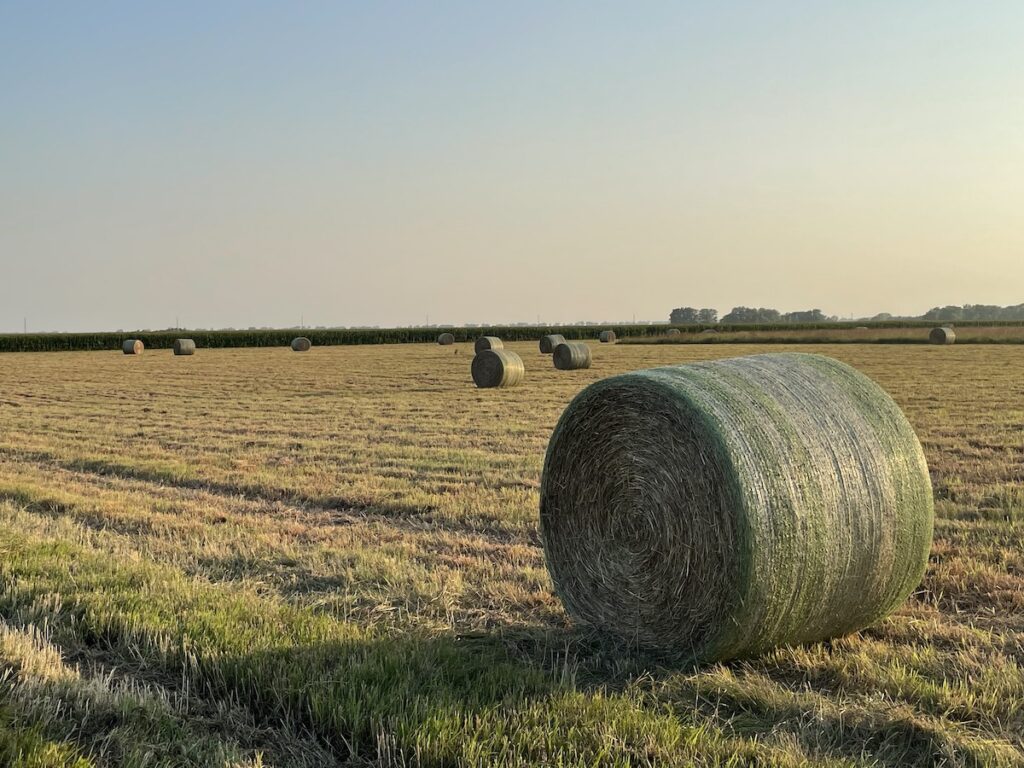
***
Oklahoma was a welcome respite; a peaceful crossing through the Cherokee and Choctaw Nations, where I could ride for hours without seeing another soul on the road. I was unable to find a Warm Showers host along my route, but found I enjoyed the lack of human contact; a forced break to recharge my social batteries. Far from any major cities, the starry nights were so crystal clear, I often peeled back my tent’s rain cover so I could fall asleep staring at the constellations above.
This brief reprieve left me rested and refreshed as I rolled into the final state of my journey: Texas. Up until this moment, I’d been surviving the open road without fully leaning into the enjoyable side of it. Planning and worry had eclipsed joy, and I vowed that for my last state, I would make an effort to stop and smell the roses whenever possible.
I immediately cut back on my mileage, dropping from eighty and ninety-mile days to fifty, allowing for side trips to flea markets, museums, and wineries. (Miranda Lambert may be a great performer, but her vino leaves something to be desired. For Texas wine, I recommend Salado Winery.)
I made more of an effort to connect with the people around me, spending nights in the homes of ranchers, farmers, and even a local author. I accepted an impromptu invitation to a ninetieth birthday party, where I met a young engineer who took me under her wing. Between mouthfuls of birthday cake, she gave me the who’s who of the party, introducing me to what felt like half of Hillsboro. At the end of the evening, they sent me off with a goodie bag of snacks for the road.
Tourist destinations like the San Marcos Riverfront and Waco’s Magnolia silos became something to savor, rather than fly past as I counted down the miles. I made an effort to sample more local cuisine, which in Texas, usually meant Mexican food given a dash of American flair. Like Chile Rellenos stuffed with brisket, smothered in queso, and relabeled as “Texas Twinkies.” Stomach full and arteries clogged, I pulled into San Antonio, the final major city before the Mexican border.
One hundred and sixty miles separated me from the finish line at Piedras Negras. Under normal circumstances, two eighty-mile days would be a breeze, but another heat wave was building to a climax. Daytime temperatures soared past 110 degrees. To compound difficulties, long stretches of open land lay ahead, some as long as forty miles, with not so much as a gas station to break them up. Getting caught in the heat could mean running out of water, suffering heat stroke, or worse. I hated to drag the ride out an extra day, but realistically, breaking this last stretch into three days was beginning to feel more pragmatic.
I stocked up on everything I might possibly need: three extra tubes, several liters of water and Gatorade, snacks for multiple days, and caffeine and salt tablets to keep me moving if things became dire. I texted my husband, letting him know to keep watching my progress on his phone, in case I stopped moving in no-man’s-land.
You’ll be fine, he replied. Remember when you crossed Death Valley? Piece of cake.
I did remember Death Valley. The toughest day on my solo ride from the Atlantic to the Pacific. I’d run out of water, gotten a flat in 115 degree heat, and been pity-rescued by a band of traveling motorcyclists. Either my husband had forgotten, or he’d developed an ironic sense of humor in my absence.
My day began at three o’clock that morning, with temperatures already hovering near eighty. The roads were rough, their surfaces less pristine than those branching off toward the much larger border town of Laredo. The constant jostling and swiftly rising sun were a drain on my energy. Hope for a two-day ride to the border dwindled.
That is, until I saw the sign.
A hundred feet ahead, shimmering like a mirage, stood a bright green road sign for Piedras Negras, ninety-nine miles away. It was the first time I’d seen the city mentioned, and it lit a bonfire in my belly. Pain and exhaustion melted away. I no longer cared if the heat crisped my skin and drowned me in sweat. All I knew was that I intended to finish this journey tomorrow.
I rode until my wrists went numb from the road’s vibrations. Until my thighs rubbed raw and bled. Until the joints in my back popped with the strain of hunching over. Until my Gatorades were empty and my snacks depleted.
I rode 111 miles under the blazing sun.
Finally, my thighs and calves begged for mercy, and I relented. I stopped to make camp just as the sun dipped toward the horizon, lighting the sky with oranges and pinks. As I pulled my tent from the bike one last time, I froze, a flood of unexpected emotion bubbling to the surface. I gripped the bike, bracing myself against the frame as tears leaked from my eyes, my back heaving with sobs. Through the lens of time and distance, I now suspect that I was a dehydrated, exhausted wreck, simply reacting to the stress of the day. But in that moment, my heart ached at the thought of witnessing my last sunset on the road; at setting up my tent for the final time. As difficult as the expedition had been, there had been so many moments of kindness and connection and love. I cried for the joy and the pain, for the gift of experiencing them both in such extremes, and the sorrow of now leaving them behind.
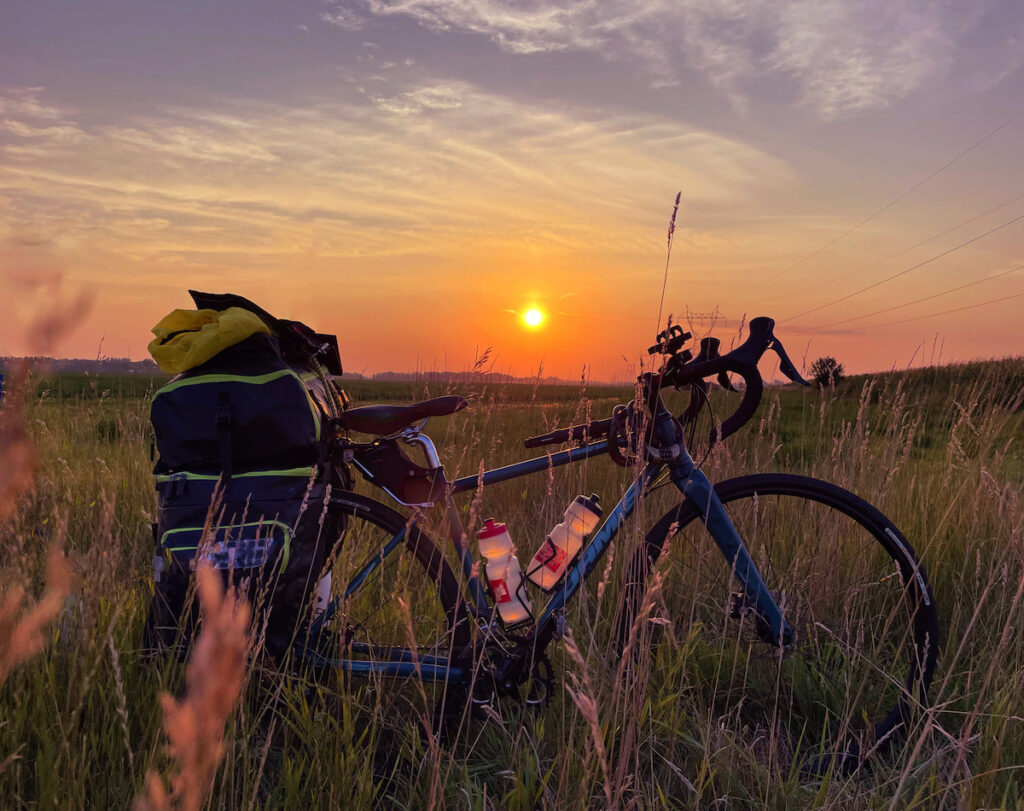
***
The final day.
With less than fifty miles to the border, I could have enjoyed a lazy, luxuriously late five a.m. start. But I was unable to sleep. Every cell of my body was screaming to get on with it, to finish what I’d started. I loaded my bags and rolled onto the pavement at 3 a.m. As the hours passed, the shimmering stars were bleached out by the brightening sky; reds and oranges morphing to baby blue. And there, far on the horizon, the outline of buildings; Eagle Pass, the last town before the Rio Grande. Just beyond, an enormous flag fluttered in the breeze. I could just barely make out the flashes of green, white, and red.
I choked out a delirious cry of joy. To see it in person, to be so close…
My legs moved of their own free will, pumping against the rolling hills, flying through the streets of Eagle Pass. I passed the hotel my in-laws had booked me for the evening, practically salivating at the thought of the soft bed, the fluffy pillows, the hot shower. But it would have to wait. Mexico was calling my name.
I approached the International Bridge, handed over my one-dollar fare, and joined the line of pedestrians crossing the Rio Grande. The river was wider than I’d expected, the water a surprisingly bright green. I soaked up every little detail; the dark green metal of the bridge, the women carrying their full shopping bags back to Mexico, the smiling border patrol guard who gave me a jolly “Bienvenidos.”
Until finally, I was there. I’d done it.
I stepped off the bridge in Piedras Negras and biked to the enormous Mexican flag in the town plaza. It was the same flag I’d seen hours ago from the road; the one that had guided me to the finish line. I tapped my palm against the pole in a silent thanks.
The next few days would be a flurry of activity; scheduling transportation home, dismantling and boxing the bike, editing hundreds of photos and videos, and psyching myself up for the return to work. But for just that brief moment, I forced myself to be still and soak it in. Twenty-five days from border to border. Blazing hot days and beautiful, starry nights. Southern hospitality and northern indifference. Men who leaned in for kisses and men who tried to run me off the road. Tiny churches extending a hand and megachurches kicking me off their property. Sleeping in million-dollar homes one night and behind a dumpster the next.
I’d begun this journey unsure of what I’d find in Middle America. “Flyover states” conjured up images of one-horse towns and endless wheat fields, maybe a honky-tonk bar to liven things up. But biking has a way of cutting through the black and white stereotypes, allowing you to see the shades of gray underneath. Down at ground level, you meet the people who live here, listen to their stories, and sleep in their homes. There’s a magic on the open road that no extravagant, five-star vacation could ever replicate. You find the shared humanity beneath the cultural differences that divide us. You learn to appreciate the beauty in day-to-day life.
I’ve now been lucky enough to cross the United States twice by bicycle, digging deep into what makes each state so special. Now I’m turning my sights to the wider world; retracing Marco Polo’s Silk Road across the Middle East, or following the eastern coast of Africa from the Nile River to the famed South African wildlife parks. Wherever my bicycle takes me next, I can always count on an extraordinary adventure when I’m on two wheels.
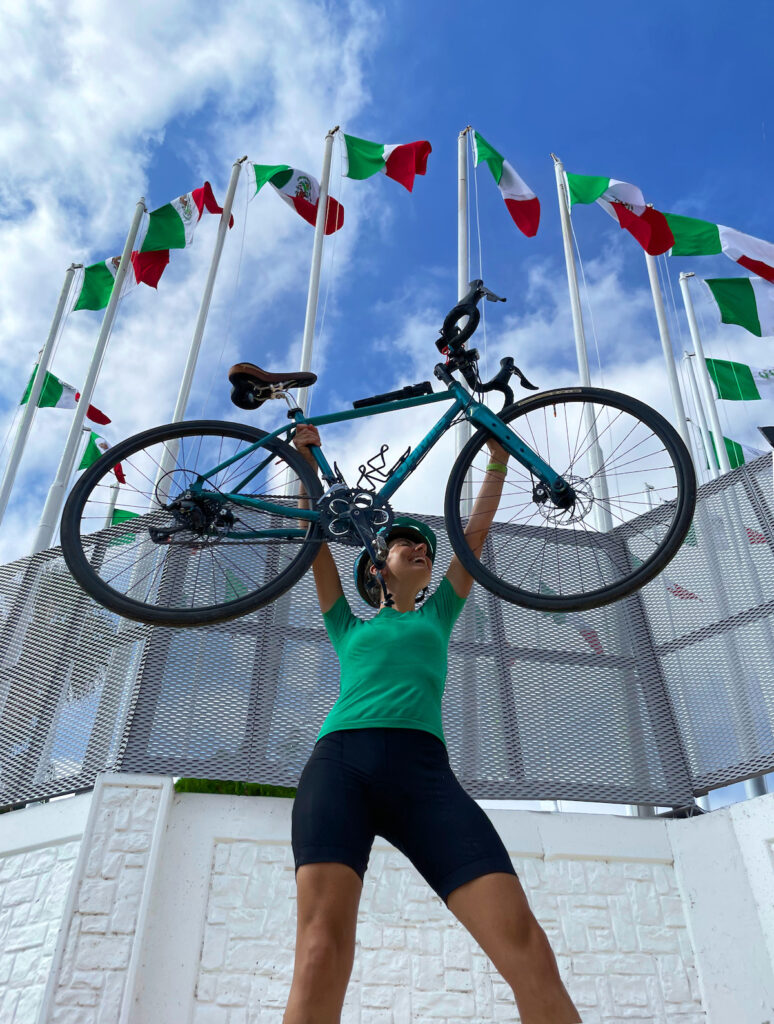
About the Author

Growing up in a family of cyclists and mountaineers, adventure is embedded in Heather’s DNA. She climbed her first mountain at age six, and rode her first century ride at fourteen. She is now circling the globe to climb the famed 7 Summits and is a long-distance adventure cyclist for Jamis Bikes. Her mission is to usher more women and girls into endurance sports; from teaching Brownie Scouts how to pack for a hike, to leading women on their first mountaineering expeditions and bikepacking journeys. Catch her on the Discovery Channel’s latest season of Naked And Afraid.
Share This Article!


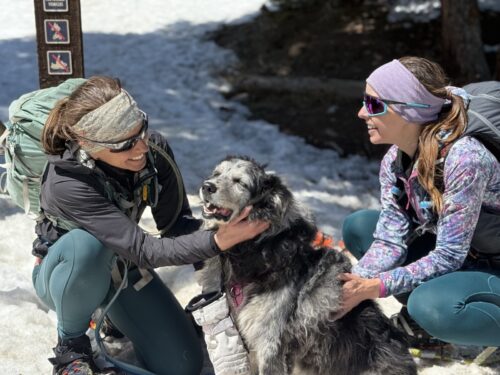
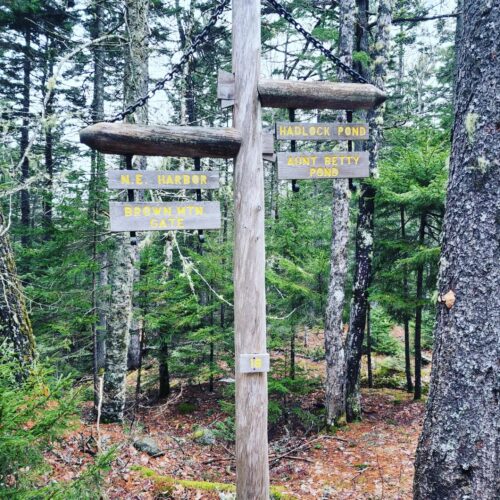









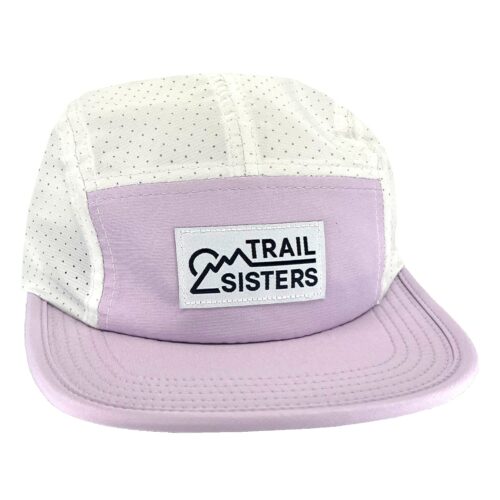
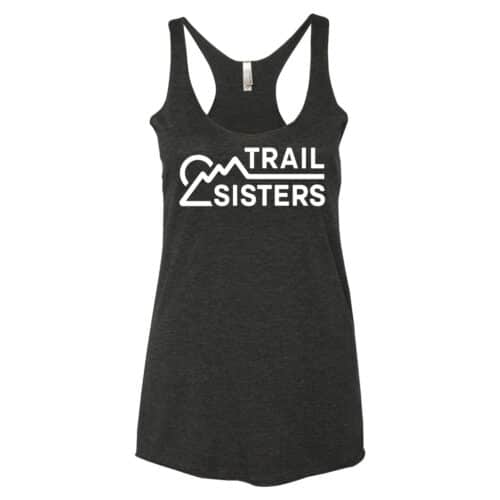
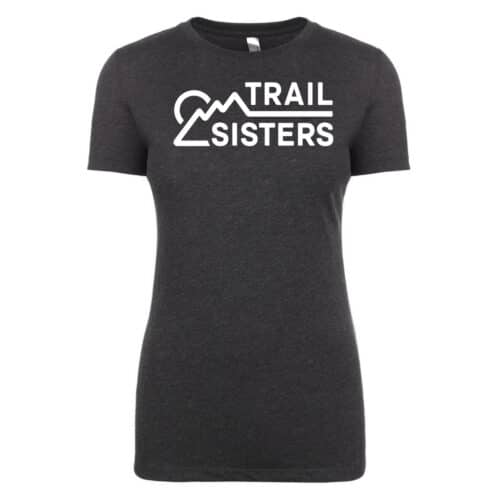
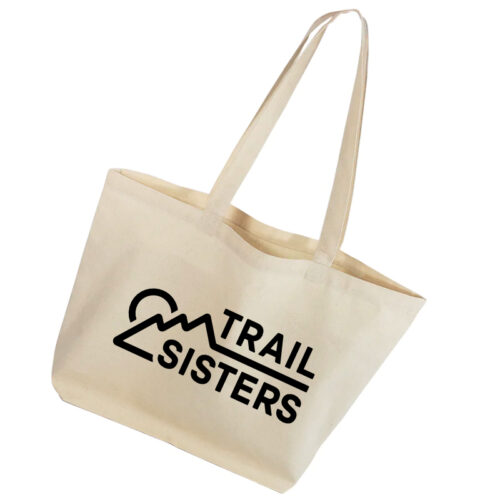
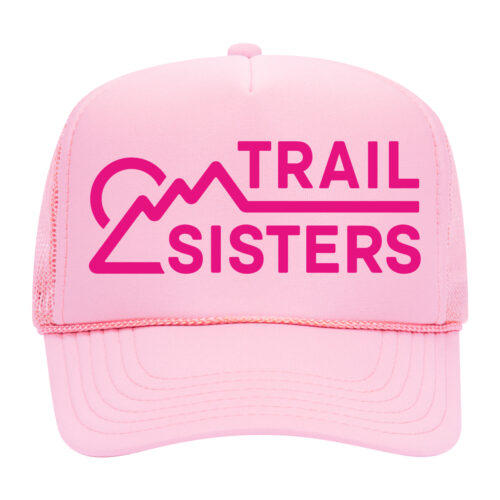
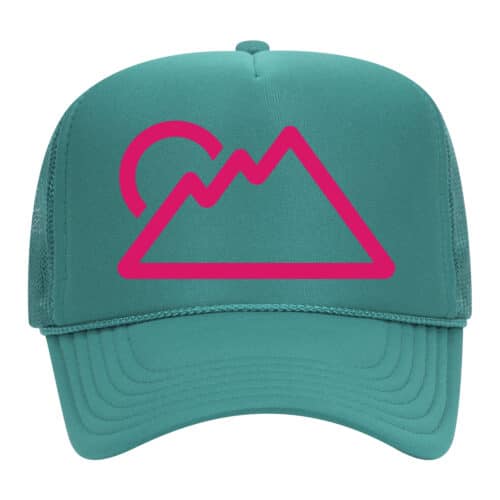

5 Responses
Thanks Heath,
Deep respect for your adventure and much thanks for the great story. Never thought it would be so harassing. But as you said no 5 star vacation can bring you what a long distance bike ride can. Wil look for your other us crossing story, that one is on my bucket list (most probably never to be checked).
Wish you back wind, down hill, the right pressure in the tubes and keep the pedals turning.
Take care and safe rides.
Heather,
East / West – North / South what’s next? Great recap of your latest adventure, thank you for sharing.
Thanks Dave! Next up will be a cross-Mongolia trip!
Incredible story and adventure, Heather! You’re a spectacular writer and I really enjoyed living this alongside you!
Thanks for sharing. My wife and I constantly get into discussions on the fastest vs. the best route. I see you picked the fastest. Appreciate your observations, I am sure that I have learned a few things from your post. Next trip, pick the ‘best route’, would love to get your opinions of that.